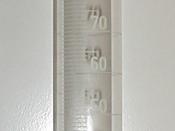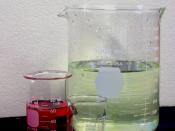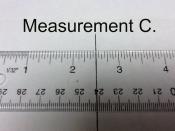Abstract
Success in lab depends on how students can make precise observations, measurements and write data. This experiment was aimed to make students get acquainted with mass and volume measurement. Five 150-ml beakers, a volumetric pipette, the graduated cylinder were tested in a different measures design to determine variation in mass and in volume. Also the experiment included the first-hand view of volume additives on example of volumes of acetone and water in different ratios. This experiment helped students to develop skills of measurement. The objectives of this laboratory were to acquaint with mass, volume measurement, also to learn to use laboratory equipment, notebook and to make calculations.
Introduction
"When you can measure what are you speaking about, and express it in numbers, you know something about it; but when you can not measure it,.... your knowledge is of a meager and unsatisfactory kind; it may be the beginning of knowledge, but you have scarcely, in your thoughts, advanced to the stages of science" (William Thomson, Lord Kelvin, 1824-1907).
Measurement is fundamental to most fields of science, including physics, chemistry and biology. System of measurement began thousands of years ago, but only by the early 1700's it becomes an accepted experimental tool
This experiment was focused on a measurement of mass in different balances, of volume using volumetric glassware, and on phenomena of volume additivity with testing mixtures of acetone and water in different ratios.
Laboratory work consists three parts: mass measurement, volumetric glassware, and volume additivity. The purpose of first exercise is an acquainting with measuring mass on the available balance of the same beakers, and of the beakers of the same size. The aim of second part of experiment is to learn to use volumetric glassware. The last exercise is intended to learn how volume depends...



Measurement
This probably should have been reformatted before submission as it made the experimant harder to follow, but you did clearly explain yourself. Did you need to discuss anything about error in measurement?
0 out of 0 people found this comment useful.